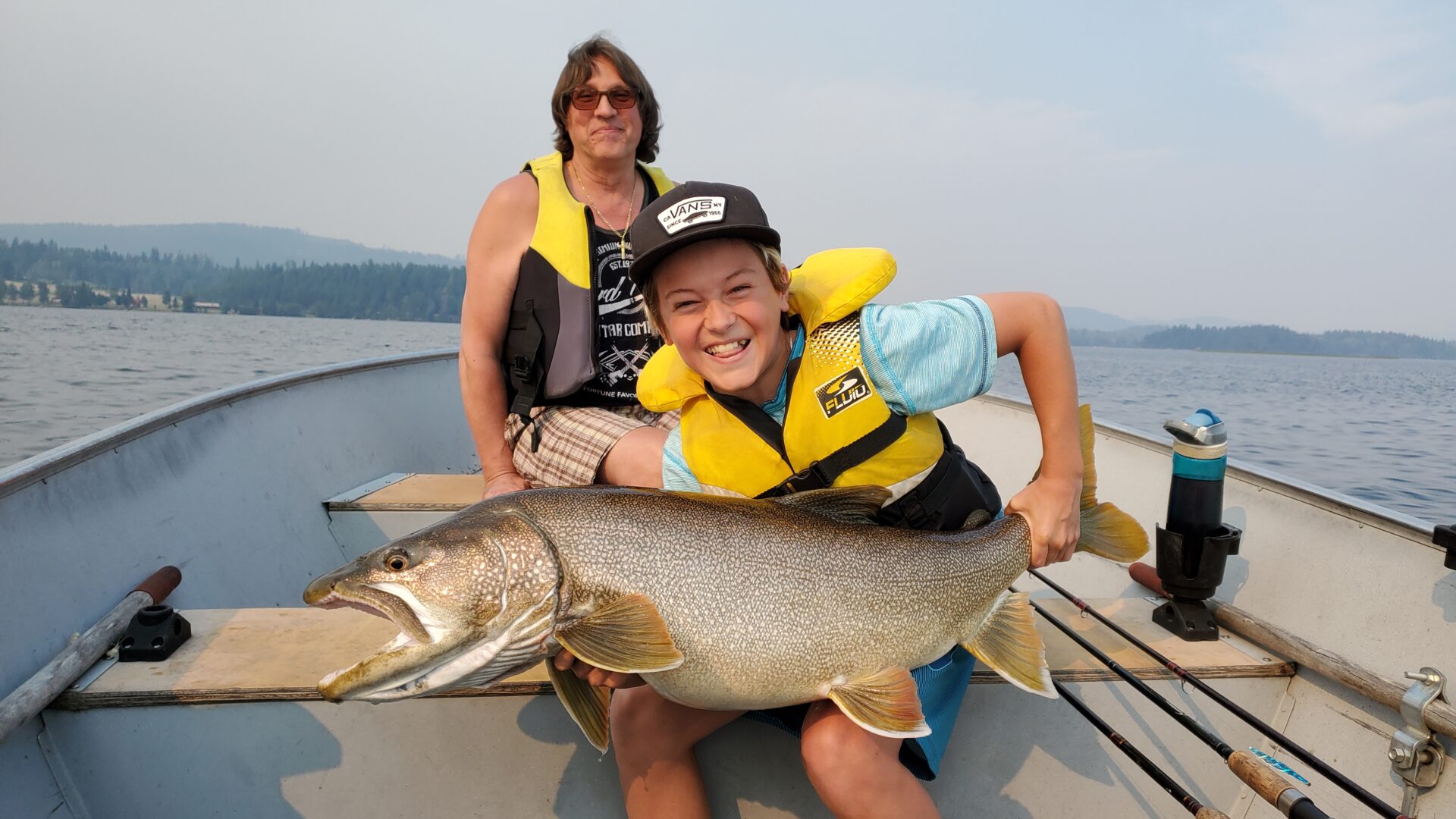Jig fishing for lake trout is a fun and effective way to entice a bite and an experience everyone should have. This method of fishing for lake trout in British Columbia is starting to become a popular and productive technique.
Advertisement
Choosing a lake, location and finding the productive jig of the day is a great way to explore lakes. After a lake has been chosen, success can be found through trial and error, along with a fish finder, to locate target depths and locations.
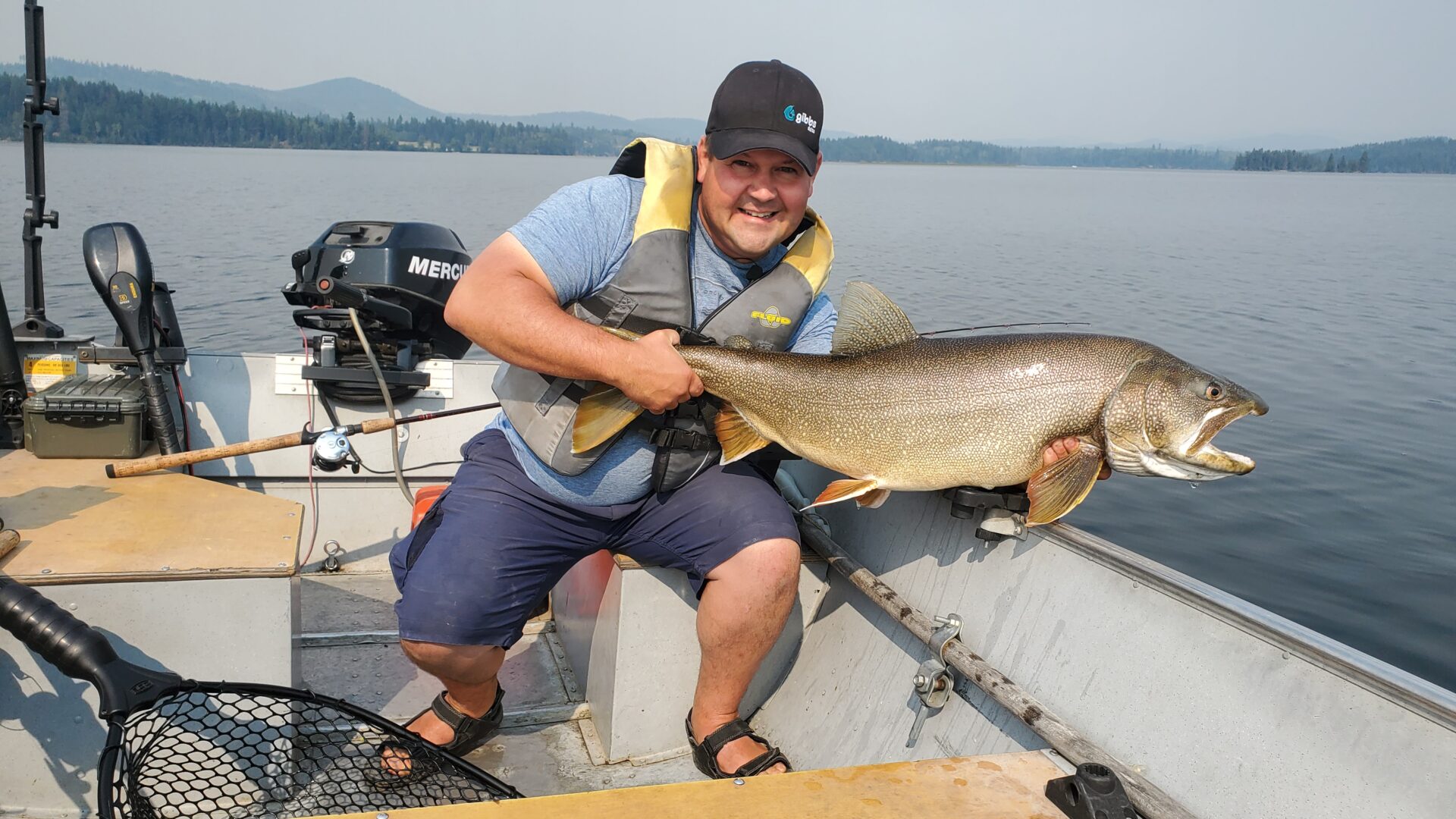
Choosing A Location
Productive locations can vary depending on the time of year. Starting depths to target range from 60 to 80 feet, but it is not uncommon to find them in ranges of 40 to 100 feet of water as well. As the water warms, lake trout will seek cooler temperatures. Bathymetric maps are a great way to gain the information needed to target lake trout. Look for deep areas of the lake close to shallow feeding areas. Bringing a printed map (or using a map on a fish finder) with marked areas to try will help narrow down the search for lake trout. Areas with natural borders above or below the surface can also help locate feeding fish. Look for choke points that help funnel fish and prey into an area. These highly productive areas can be paths to feeding areas. They can also be areas that lake trout use to corral their prey, so they are easier to feed on. Lake trout can also be found suspended over deep water, with the help of a fish finder. Marking these locations can help locate feeding areas where the fish are targeting kokanee in the water column.
Advertisement
Gear Selection
Medium heavy to heavy rods help with jigging and handling larger fish. Heavier rods will help bring fish in quickly, so they can be released and eventually caught again. Bait-casting reels spooled with 15-pound test monofilament line, or braided line, can help with bite detection, especially when fishing deeper than 80 feet. Line-counter reels are a great option when there is more than one person in the boat. These reels help when targeting suspended depths, because everyone on the boat can reach the exact depth needed.
Jig selection depends on a few factors. In windy conditions, a heavier jig will help keep your line more vertical in the water. If your boat is equipped with a bow-mount motor with an anchor lock feature, then a weighted jig becomes more of a personal preference. Jigs like Buzz Bomb lures and tube jigs work well for lake trout. Buzz Bomb-type lures drop quickly to the bottom and help get your presentation to fish before they swim away. Tube jigs generally sink slower like a wounded fish and often get bit before they get to the bottom. Good colour choices to start with are white, blue and green because these colours can be seen well at depth. It also helps to use jigs with glow in them, like the Big Nasty Tackle rattle jigs, or some tube jigs and Buzz Bomb lures. These lures can be charged with a UV light to maximize glow in the water and give the angler an edge when the fish are not biting well.
Advertisement
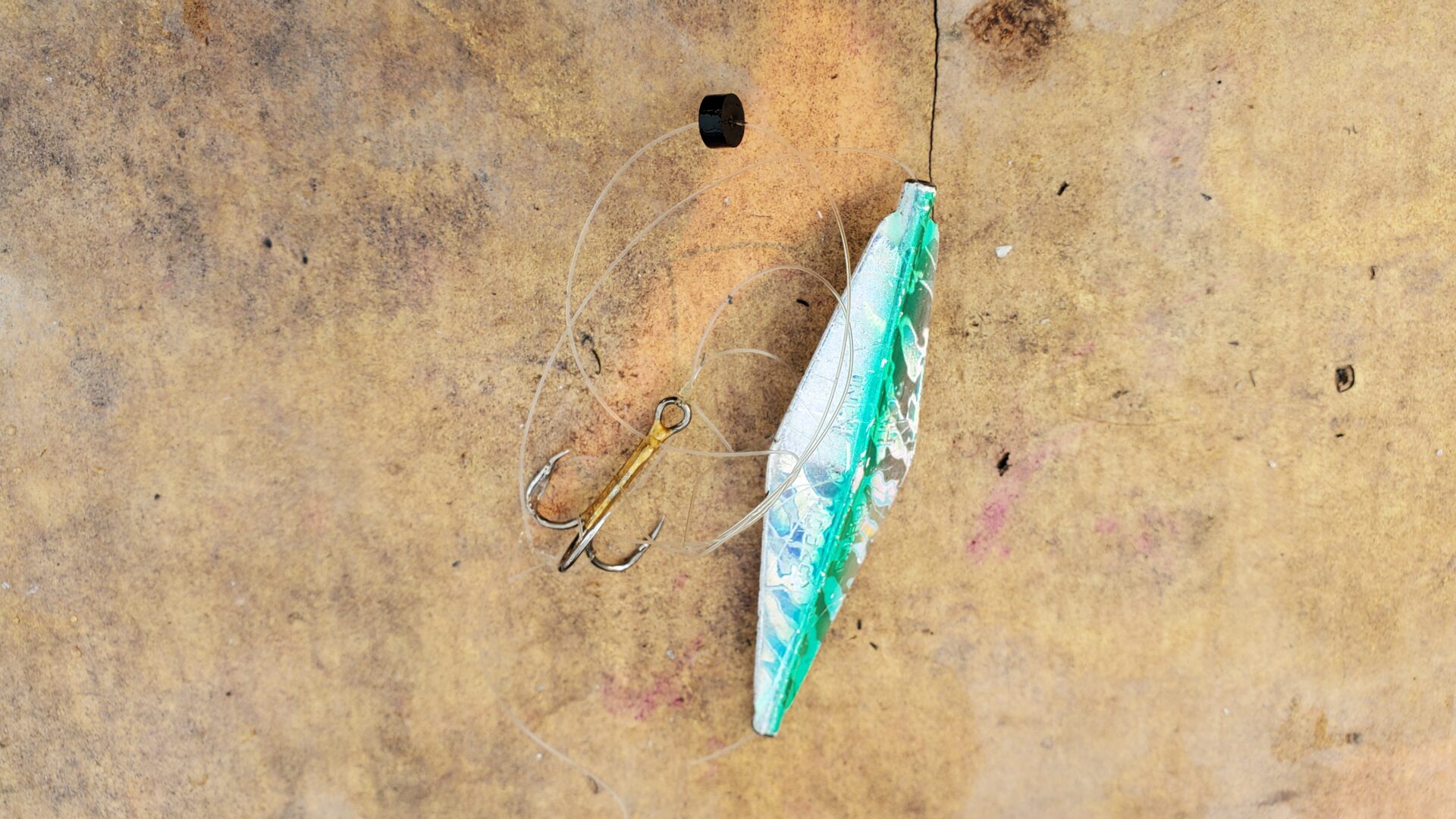
Using Your Electronics
Fish finders can help locate lake trout both suspended and on the bottom of the lake. Look for ledges, feeding flats and narrow bottom structure that can attract lake trout and their food into a concentrated area. If you mark a fish, try jigging the area for 15 minutes or until you get a bite. Sometimes, lake trout cruising on the bottom are not detected by a fish finder, especially entry-level models. So, keep jigging even after you stop seeing suspended fish on your electronics. When you mark a fish, there are three main productive methods to try while using your electronics. First, drift over locations using wind to push your boat and mark promising locations, so you can repeat the drift. Second, troll around until you mark fish, then drop your lure down. When trolling, if you mark a fish, drop your jig right away, then reverse your boat so your line is vertical in the water. Watch your fish finder to see the behaviour of the fish you are dropping down to. Third, using a bow-mounted motor that is linked to a fish finder can help hold you over fish in the wind.
Jigging Techniques
When targeting lake trout, there are a few techniques to use to help entice a bite. Keeping your line vertical in the water as much as possible will help increase reaction time for a hook set and can reduce the chances of snagging bottom. The first technique is to bounce your jig off the bottom. By doing this, you create noise and disturbance on the bottom. Feeding lake trout will come in to investigate. Jig like a wounded fish with sporadic movements. Continue to bounce your jig off the bottom and pause for a few seconds on the bottom. Then, switch up your jigging and bounce your jig off the bottom as much as you can. Lift and hold your jig a couple feet off the bottom. Sometimes this works to entice a strike. A lake trout will also chase your jig if you reel up to simulate an escaping bait fish. Reel up slowly and watch your fish finder to see their behaviour. Chasing fish will come up in the water column and sometimes follow right to the surface. Another technique to try is bouncing your jig off the bottom while drifting with the wind. If your line gets to a 45-degree angle, reel in and reset your drift by dropping your jig straight down again. Make sure you are hitting the bottom to help make noise and disturbance to call in fish. This technique takes more practice, as you will need to constantly let out line and reel in line to follow the contour of the bottom.
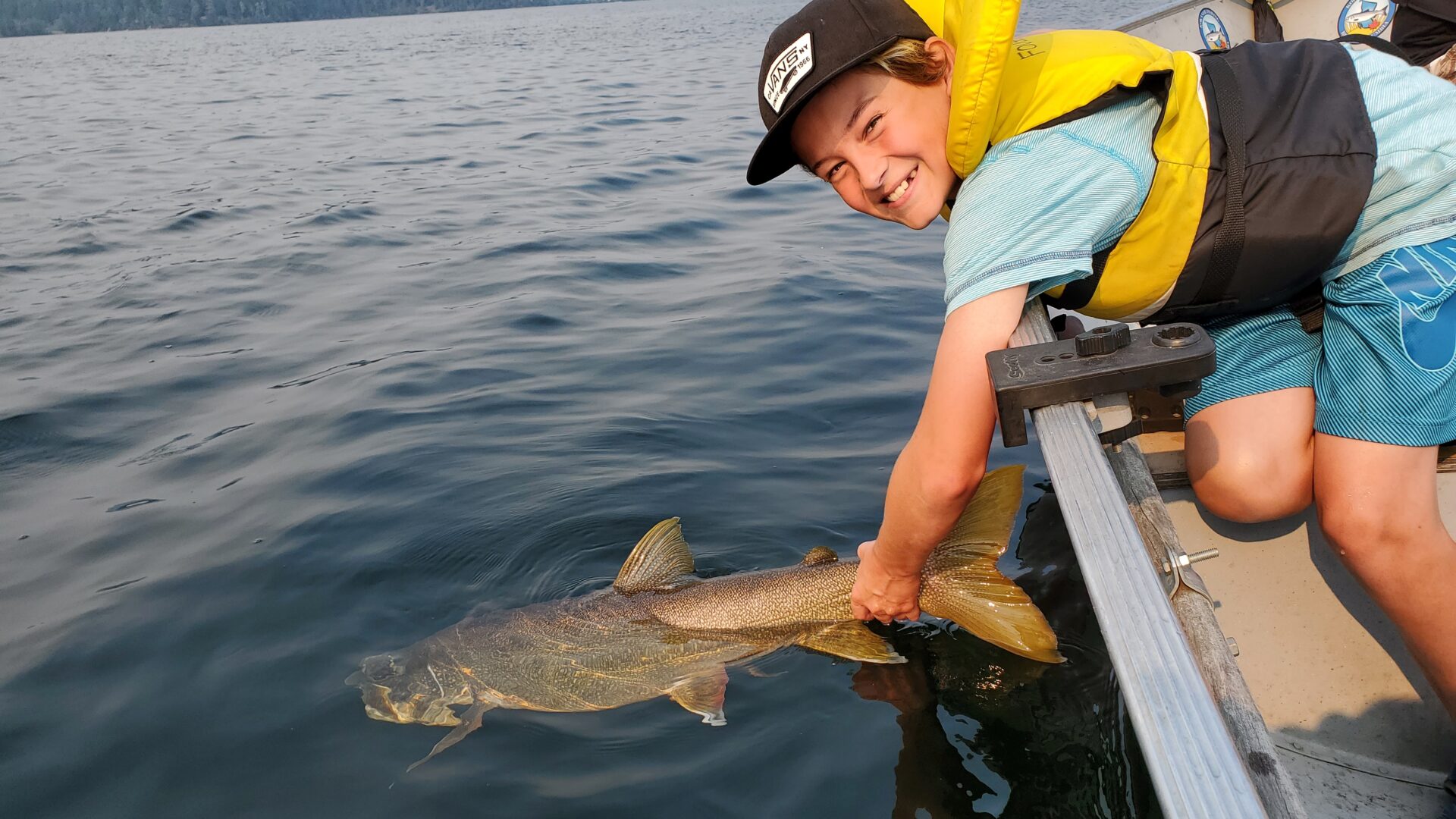
Why Jigging Is Best
Jigging is best because it is a one-on-one experience with the angler and the fish. Fun can be had when trying to entice a bite. Watching a lake trout chase your jig as you are slowly pulling it away is an exciting way to fish, because you never know when the predator instinct will kick in and the lake trout will strike. This method of fishing helps reduce mortalities of fish, which can help anglers choose which fish they will harvest, if any. Also, with the rising cost of fuel, jigging is environmentally friendly and easier on the pocketbook. Why not save some gas for the trip, float around on the lake and take in the sounds of nature? This method of fishing is effective, but also relaxing and peaceful.
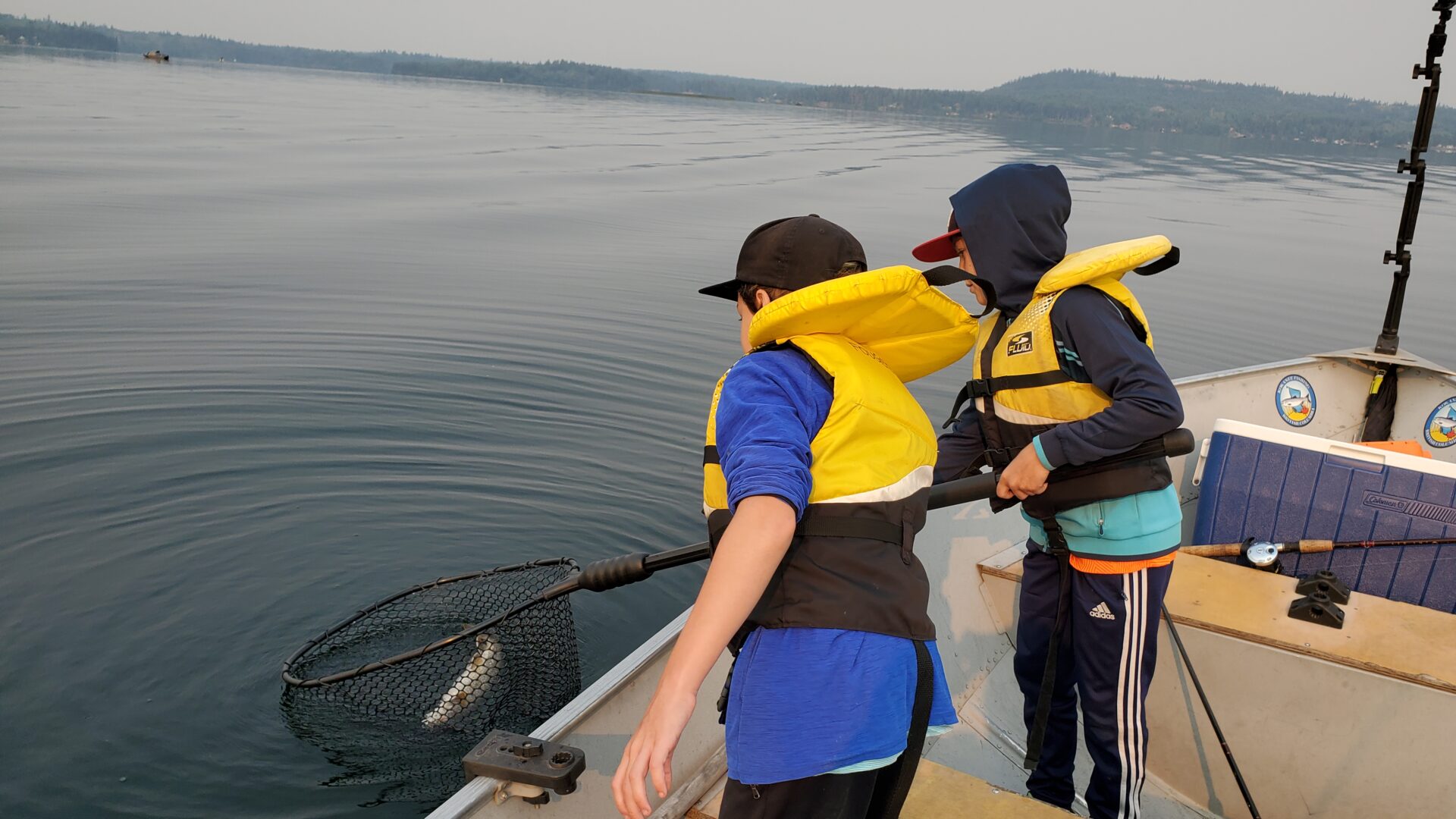
Net Selection, Conservation & Care
If you plan to release your catch, choose a large rubber net. These nets are easier on the fish. Choose one that fits the size of the fish you intend to target. Take your time and reel in slowly. Jigging can be easier on the fish, because they are not tiring from being trolled behind a boat and are slowly rising in the water column at their own pace. A slow retrieve will allow the fish to “burp,” which is how the fish equalizes air in the water as it ascends from the depths of the lake. Burping is easily noticed, as air bubbles rise to the surface from the fish.
Larger fish should be released to help keep a fishery strong. These large fish carry more eggs for reproduction of the species, compared to smaller fish. They also have higher mercury levels, which makes the smaller fish with less mercury more appealing for consumption. Lake trout up to 20 inches taste the best, while some people also report lake trout up to five pounds are edible as well. Some anglers report the best flesh quality is when the fish is caught and cooked on the same day. Some people freeze them and eat them later with no issues. Others say they do not taste as good once frozen. Harvest only what you will eat, because these fish are naturally reproductive and are not supported by a stocking program. After you harvest a lake trout, be sure to bleed the fish and get it on ice in a fish cooler right away. This will increase the meat quality to be enjoyed soon after the harvest.
Cooking Your Catch
Lake trout are enjoyed many ways. The most common way to cook lake trout is by deep frying it in a fish batter. The easiest way to cook it is fried in a pan with a small amount of oil. Shake and bake combined with bacon fat is a great way to fry up these fish. They also cook well in the oven with a coating of your choice.
